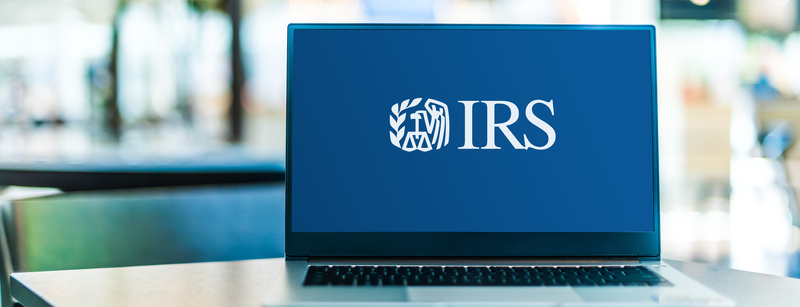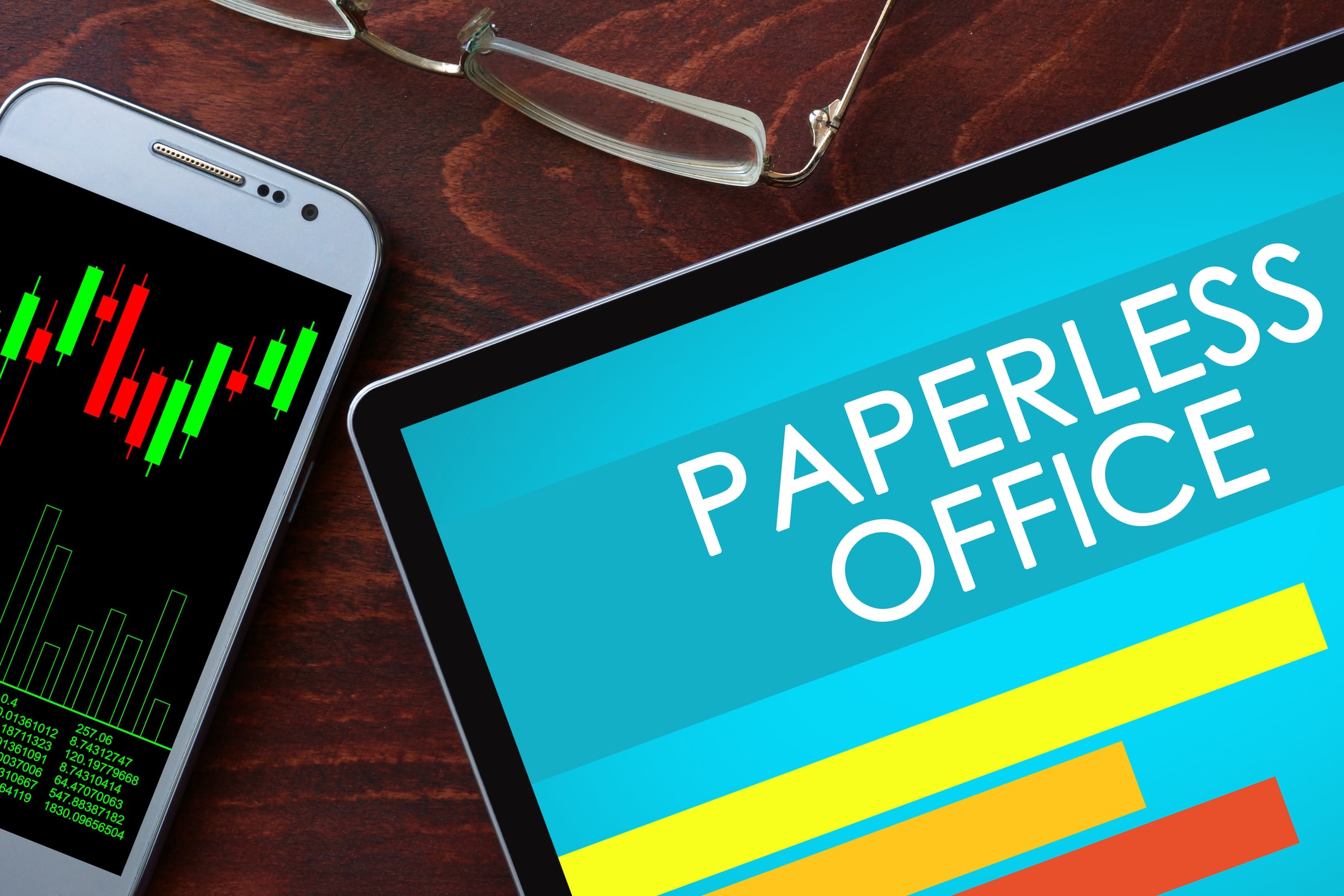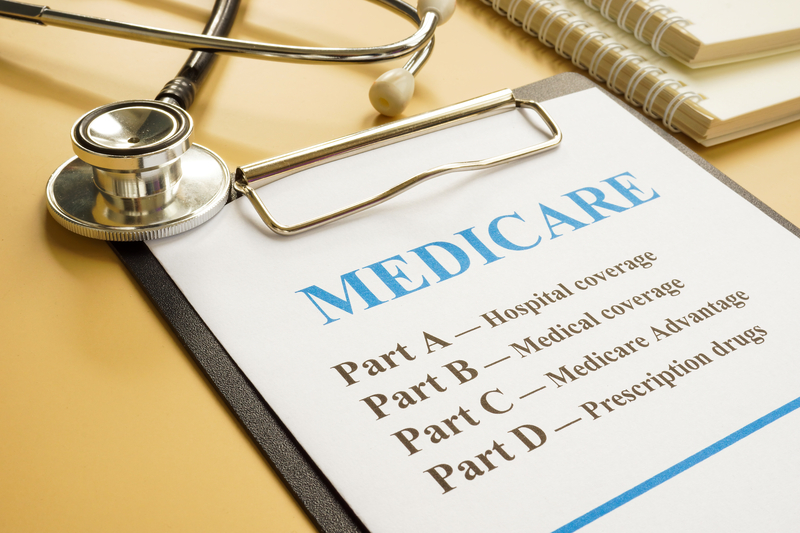Author: Gerry Acuna
Ask or Be Asked: Executor of an Estate
March 2, 2022

An executor of an estate is someone called upon to settle a deceased individual’s financial affairs. In your will, you may name a close relative, friend, accountant, attorney, or financial institution to act as executor of your estate. You also may designate co-executors—more than one person to handle your affairs. If you are asked to be an executor, consider it a great honor. But at the same time, keep in mind that it is also a great responsibility.
You should select an executor with integrity and good judgment. The law requires an executor to act in the estate’s best interest—known as “fiduciary duty”—even if they are also an heir, which is often the case. You’ll need to make sure they understand and are prepared for the job.
The Duties of an Executor of an Estate
An executor’s responsibilities can vary depending on the complexity of your estate, and the decisions you designate in your will. Following are some of the duties an executor of an estate performs.
- Locate the last will and file it in probate court
- Obtain certified copies of the death certificate
- Notify the state department of health of the death if a funeral home, crematorium, hospital, or nursing facility has not
- Distribute assets to beneficiaries
- Pay creditors
- Issue notices of death to banks, government agencies, and insurance companies
- File final tax returns
- Maintain property until the estate is settled
- Arrange care for any pets
- Make court appearances on behalf of the estate
- Notify current employer, if applicable
- Notify the deceased’s beneficiaries of the probate hearing
- Keep accurate records
- File the final accounting with the court and close the estate
As an executor, you may discover you need to hire a professional such as an accountant or attorney to help value and distribute certain assets, including:
- Assets with disputed ownership
- Business interests
- Royalties
- Out-of-state assets
- Complex investments
Ambiguities in a will and substantial bequests to a minor also may require a professional’s expertise, which your estate will pay customarily.
The Decision to Serve as an Executor
If you are asked to serve as an estate’s executor, realize that it is a great honor and a great responsibility. Consider your decision carefully before you agree. Think about the time commitment as well as the skillset and temperament required to perform the duties. Find out why the person asked you to serve as an executor and discuss his expectations for you to fill this role.
With this disclosure, you should be able to decide if you are qualified for the job and your fulfillment of an executor’s duties will be appreciated.
Compensation Considerations
Many executors perform their duties without compensation, especially if they are one of your estate’s beneficiaries. But executors can get paid for their work, and this arrangement is more common if the executor is a person outside your family or if settling your estate requires significant expenses such as travel, filing court documents, or overseeing the sale of your real estate.
Another option for you is to limit in your will the fees to a specific dollar amount. Or you may specify the payment of reasonable fees based upon state law.
Typically, executors can expect to get paid once the estate is settled. If they incur out-of-pocket expenses, such as utilities, property taxes, insurance, and storage fees before the estate is settled, they can usually reimburse themselves during their estate administration. But again, compensation is a subject that should be spelled out before you accept an executorship. Spending down any estate monies can be an area of great sensitivity, especially if heirs believe their inheritance was reduced because of your executorship.
InsureYouKnow.org
When you select an executor of your estate who accepts the responsibility to carry out your wishes regarding your estate upon your death, ask yourself the following five essential questions. Let the executor know if the answers can be found on your InsureYouKnow.org portal.
- Where is your original will? If you keep your will in your house, be specific about where to find it. If you filed it with your attorney, provide contact information. Don’t store it in a safe deposit box, where it may be difficult to access after your death. You should share your InsureYouKnow.org access credentials with the executor of your estate to be able to find a copy of your will online.
- Who should be notified? Compose a list of people and organizations with contact information for your executor to contact. If you keep this list at InsureYouKnow.org, you can update it regularly.
- What are your passwords and access codes? Let your executor know how to retrieve your passwords and access codes for email, social media, other media accounts, cellphones, and computers. Store and keep this data current at InsureYouKnow.org.
- Who will receive your possessions? If you have nonfinancial items such as family recipes, photos, heirlooms, and memorabilia, keep details with designated recipients at InsureYouKnow.org.
- Do you have any secret items? Let the executor or another person you trust know if you possess personal items that need to be dealt with on a confidential basis. Such items may include correspondence, photos, or documents personal in nature. You can keep a secure list of these items at InsureYouKnow.org.
Selecting a trusted executor to carry out your will is an important part of estate planning. Experts recommend updating your will every few years to make sure it still reflects your chosen executor and decisions to be carried out after your death. If you need to create or update your will, you can file copies at InsureYouKnow.org.
Whether you are the person asking or are the person being asked to be an executor of an estate, carefully consider and execute the responsibilities and duties required.
Steps to Take in American Heart Month
February 15, 2022

February, celebrated as American Heart Month, is a time to reflect on your heart health, consider your risk factors, and take steps toward preventing heart disease and stroke.
Review these seven signs for heart disease risk:
- Smoking. More than 35 million adults in America are smokers, and thousands of young people pick up the habit daily. If you don’t smoke, don’t start. If you’re a smoker, do your best to quit or cut down. The American Lung Association can help tobacco users figure out their reasons for quitting and then take the big step of quitting for good.
- Physical inactivity. Regular physical activity helps improve overall health and reduces the risk for heart disease, stroke, and premature death. In people with cardiovascular disease, physical activity can help manage their conditions; exercise training has been shown to have a positive effect on people with certain types of heart failure, and cardiac rehabilitation, which includes physical activity training, helps improve the health of people who have had a heart attack or bypass surgery.
- Nutrition. Make heart-healthy diet decisions. Eat whole foods low in trans-fat, saturated fat, sodium, and added sugar. Nutritionists recommend that you fill half your plate with fruits and vegetables.
- Overweight/Obesity. People overweight or obese have a higher risk for heart disease. Carrying extra weight can put extra stress on the heart and blood vessels. To find out if your weight is in a healthy range, you can calculate your Body Mass Index (BMI) at CDC’s Assessing Your Weight website.
- High Cholesterol. Your health care team should test your blood levels of cholesterol at least once every 4 to 6 years. If you have already been diagnosed with high cholesterol or have a family history of the condition, you may need to have your cholesterol checked more often. Talk with your health care provider about this simple blood test. If you have high cholesterol, medicines and lifestyle changes can help reduce your risk for heart disease.
- Diabetes. If you have diabetes, monitor your blood sugar levels carefully. Talk with your health care team about treatment options. Your doctor may recommend certain lifestyle changes to help keep your blood sugar under control. These actions will help reduce your risk for heart disease.
- High Blood Pressure. Millions of people in the United States have high blood pressure, and millions of them are as young as 40 or 50. If you are one of them, talk to your doctor about ways to control it. High blood pressure usually has no symptoms, so have it checked on a regular basis. Your health care team should measure your blood pressure at least once every 2 years if you have never had high blood pressure or other risk factors for heart disease.
If you have been diagnosed with high blood pressure, also called hypertension, your healthcare provider will measure your blood pressure more often to make sure you have the condition under control. Ask how often you should check your blood pressure which can be done at a doctor’s office, at a pharmacy, or at home.
Your health care team might recommend some changes in your lifestyle, such as lowering sodium in your diet; your doctor also may prescribe medicine to help lower your blood pressure.
During the COVID-19 pandemic, many people have put off scheduling a routine annual physical examination. Healthcare professionals take precautions daily to prevent the transmission of COVID-19 in their facilities. If you feel comfortable with your vaccination status and safety measures in place, make an appointment to find out if you have high blood pressure or high cholesterol and to address other risk factors.
InsureYouKnow.org
After you check in with your healthcare provider to rate your risk for heart disease and stroke, keep track of recommended prevention steps, prescribed medications, lab test results, and a calendar of completed and upcoming appointments at insureyouknow.org.
The Great Resignation Continues in 2022
January 29, 2022

“The Great Resignation” is a term coined in May 2021 by Anthony Klotz, Ph.D., an associate professor of management at Mays Business School at Texas A&M University who predicted the mass exodus of employees abandoning jobs during the pandemic.
In April, a month before Dr. Klotz made this prediction, a record 4 million people quit their jobs, many of them in low-paying, inflexible industries such as retail trade sectors and food services. He explained that during the pandemic, employees have been able to reflect about family time, remote work, commuting, passion projects, life and death, and what it all means which led workers to consider alternatives to their current positions.
Because the latest data suggests this trend, also called the “Big Quit,” will continue through 2022, employees, as well as employers, must prepare for changes in the workforce.
Employees
Before you submit your resignation, consider the following suggestions to guide your decision:
- Reassess your duties: Expanding your responsibilities within the company may offer the growth that you’re looking for without leaving your workplace. Promotion within your company may lead to a higher salary and additional benefits. On the other hand, you may feel overworked or are experiencing burnout, resulting in work-related stress, and seeking a less demanding opportunity may be a solution during this difficult time.
- Meet with your employer: If you prefer to work remotely, meet with your employer and plead your case to work all or part of your workweek away from the corporate office, especially if you have health and safety concerns, childcare issues, or COVID-related care responsibilities. Explain how important work/life flexibility is to you and ask if your employer is willing to consider your needs for your home life situation. Take this opportunity to ask if your salary, benefits, and health insurance could be improved to entice you to stay.
- Be flexible with your transition: If possible, notify your supervisor in person when you decide to resign and be flexible about the ending date in your position. Be professional in your exit interview, request a letter of recommendation for your files, find out when you’ll receive your last paycheck, and ask about the continuation of your benefits.
- Assess your financial situation: If you determine that you need to continue receiving a steady paycheck and insurance benefits, secure another position or outline a solid self-employment opportunity before you resign. If you are close to retirement age, figure out if you can delay collecting Social Security and retirement benefits so you can collect higher monthly payments in the future.
Employers
Employers who want to reduce staff turnover and retain experienced employers may benefit from the following tips adapted from the article, “How Employers Can Overcome The Great Resignation” from the Worth Media website.
- Be creative in putting together benefits packages that can support a diverse workforce with broad, varying needs.
- Remain flexible when employees choose their work locations.
- Keep an open line of communication with your employees.
- Emphasize the importance of employees’ mental and physical well-being.
- Prioritize pay equity and adopt a spirit of transparency.
- Remind your employees about your company’s mission, values, and vision.
- Treat employees who do leave with respect, a sense of professionalism, and kindness.
Employers’ main goal during this tumultuous time should be to remain calm, listen to employee feedback, and use it to make any necessary changes to their business model, benefits package, and salaries.
InsureYouKnow.org
Are you planning to join “The Great Resignation” in 2022? If so, consider not only how you can improve your present work situation but also what the future may hold for your career choices, continuing education, home life, insurance coverage, and financial goals. As you put each of these options in place, keep records regarding your decisions at insureyouknow.org.
Get Ready to File Your Taxes
January 14, 2022

Although April 15 is traditionally the Internal Revenue Services’ (IRS) tax deadline day, in 2022 you’ll have until Monday, April 18, to file your taxes for 2021. April 18 also will be the deadline to request an automatic extension for an extra six months to file a return although the payment of taxes remains the same.
The IRS encourages taxpayers to get informed about topics related to filing their federal tax returns in 2022. These topics include special steps related to charitable contributions, economic impact payments, and advance child tax credit payments. Taxpayers can visit IRS.gov/getready for online tools, publications, and other helpful resources for the filing season.
Collect year-end income documents
Gather all your year-end documents before you start preparing your 2021 tax return and have on hand:
- Social Security numbers (SSNs) of everyone listed on your tax return. You may have these numbers memorized but double-checking that the SSNs on your tax return are accurate will avoid processing delays.
- Bank account and routing numbers. You’ll need these for direct deposit refunds. Direct deposit is the fastest way for you to get your money and avoids a check getting lost, stolen, or returned to IRS as undeliverable.
- Forms W-2 from employer(s).
- Forms 1099 from banks, issuing agencies, and other payers including unemployment compensation, dividends, distributions from a pension, annuity, or retirement plan.
- Forms 1099-K, 1099-MISC, W-2, or other income statements if you are a worker in the gig economy.
- Form 1099-INT for interest received.
- Other income documents and records of virtual currency transactions.
- Form 1095-A, Health Insurance Marketplace Statement. You will need this form to reconcile advance payments or claim the premium tax credit.
- Letter 6419, 2021 Total Advance Child Tax Credit Payments, to reconcile your advance child tax credit payments.
- Letter 6475, Your 2021 Economic Impact Payment, to determine your eligibility to claim the Recovery Rebate Credit.
You’ll receive forms by mail or via access online from employers and financial institutions in January. You should carefully review the forms for the income you received in 2021. If any information shown on the forms is inaccurate, you should contact the payer immediately for a correction.
Here are some key items for you to know before you file this year:
Notice changes to the charitable contribution deduction
Taxpayers who don’t itemize deductions may qualify to take a deduction of up to $600 for married taxpayers filing joint returns and up to $300 for all other filers for cash contributions made in 2021 to qualifying organizations.
Check on advance child tax credit payments
Families who received advance payments will need to compare the advance child tax credit payments that they received in 2021 with the amount of the child tax credit that they can properly claim on their 2021 tax return.
- Taxpayers who received less than the amount for which they’re eligible will claim a credit for the remaining amount of child tax credit on their 2021 tax return.
- Eligible families who did not get monthly advance payments in 2021 can still get a lump-sum payment by claiming the child tax credit when they file a 2021 federal income tax return next year. This includes families who don’t normally need to file a return.
Early this year, the IRS will send Letter 6419 with the total amount of advance child tax credit payments taxpayers received in 2021. You should keep this and any other IRS letters about advance child tax credit payments with your tax records. You can also create or log in to IRS.gov online account to securely access your child tax credit payment amounts.
Claim the recovery rebate credit for economic impact payments
If you didn’t qualify for the third economic impact payment or did not receive the full amount, you may be eligible for the recovery rebate credit based on your 2021 tax information. You’ll need to file a 2021 tax return to claim the credit.
You’ll need the amount of your third economic impact payment and any plus-up payments received to calculate your correct 2021 recovery rebate credit amount when you file your tax return.
The IRS also will send early this year Letter 6475 that contains the total amount of the third economic impact payment and any plus-up payments received. You should keep this and any other IRS letters about your stimulus payments with other tax records. You also can create or log in to IRS.gov online account to securely access your economic impact payment amounts.
Report unemployment compensation received
In 2021, many people received unemployment compensation that is taxable and must be reported on their income tax returns. If you received unemployment benefits, you should receive Form 1099-G, Government Payments, from your state unemployment insurance agency in January either by mail or electronically. Check your state’s unemployment compensation website for more information. Form 1099-G reports the amount of unemployment compensation received in Box 1 and any federal income tax withheld in Box 4. Be sure to include these amounts on your 2021 federal tax return. Find more information on unemployment benefits in Publication 525.
Choose a reputable tax return preparer
As you get ready to file your 2021 tax return, you may be considering hiring a tax return preparer. The IRS reminds taxpayers to choose a tax return preparer wisely. This is important because you are responsible for all the information on your return, no matter who prepares it for you.
There are different kinds of tax preparers, and your needs will help determine which kind of preparer is best for you. With that in mind, here are some quick tips from the IRS to help you choose a preparer.
- Check the IRS Directory of Preparers. While it is not a complete listing of tax return preparers, it does include those who are enrolled agents, CPAs, and attorneys, as well as those who participate in the Annual Filing Season Program.
- Check the preparer’s history with the Better Business Bureau. Taxpayers can verify an enrolled agent’s status on IRS.gov.
- Ask about fees. Taxpayers should avoid tax return preparers who base their fees on a percentage of the refund or who offer to deposit all or part of their refund into their financial accounts.
- Be wary of tax return preparers who claim they can get larger refunds than others.
- Ask if they plan to use e-file.
- Make sure the preparer is available. People should consider whether the individual or firm will be around for months or years after filing the return. Taxpayers should do this because they might need the preparer to answer questions about the preparation of the tax return.
- Ensure the preparer signs and includes their preparer tax identification number (PTIN). Paid tax return preparers must have a PTIN to prepare tax returns.
- Check the person’s credentials. Only attorneys, CPAs, and enrolled agents can represent taxpayers before the IRS in tax matters. Other tax return preparers who participate in the IRS Annual Filing Season Program have limited practice rights to represent taxpayers during audits of returns they prepared.
Review Publication 5349: “Year-Round Tax Planning is for Everyone”
Life changes can affect your expected refunds or the amount of tax you owe. These changes include things such as employment status, marital status, and financial gains or losses. Publication 5349 provides tips on developing habits throughout the year that will help make tax preparation easier.
InsureYouKnow.org
When you file your 2021 tax return, keep a record of the forms you submit to the IRS at insureyouknow.org. Get a jump on your 2022 tax return by organizing your tax records, including Forms W-2 and W-9 from employers, Forms 1099 from banks and other payers, other income documents, and records of virtual currency transactions. Keep track of your tax records as you receive them at insureyouknow.org. Having records organized makes preparing a tax return easier. It may also help you discover potentially overlooked deductions or credits.
Resolve to Go Paperless in 2022
December 30, 2021

In January, follow the example of the U.S. government that has committed to moving to a paperless archival system by December 31, 2022. The Office of Management and Budget’s (OMB) directive for government agencies to transition to electronic records has prompted them to take steps in their modernization journeys.
The government faces multiple challenges with paper records, such as burdens on the workforce and high costs to manually create, use, and store nonelectronic information. As an individual, you may face similar dilemmas in dealing at home with your printed files, insurance records, and other important documents that would be difficult to replace if damaged or destroyed by natural disasters or accidents.
As government agencies transition to electronic records, many are experimenting with new technologies to sort through electronically stored information. Universities and businesses also have guidelines for storing electronic records in online repositories that they strive to:
- Back up regularly
- Comply with all privacy and security requirements
- Allow for shared access through a network or a cloud-based program
- Organize in such a way that records can be identified and purged appropriately
- Set up to migrate content to a new system upon replacement
- Maintain through regular software updates
InsureYouKnow.org
After you review the electronic storage practices of the government, universities, and businesses, establish your own ground rules for storing your important records at InsureYouKnow.org. Keep in mind the following tips:
- A systematic plan for keeping track of important documents can save you hours of anxious searching for misplaced items. It also can help you reduce the number of nonimportant papers cluttering your home.
- It is important to carefully store valuable papers which would be difficult or time-consuming to replace. Original hard-to-replace documents are ideally kept in a safe deposit box or a fire-proof, waterproof, burglar-proof home safe or lockbox. Scanned copies can be stored at InsureYouKnow.org where they will be readily accessible.
- Electronically stored records must be legible, readable, and accessible for the period of limitations required. It is important to back up electronic files at InsureYouKnow.org in case of a computer malfunction in your home office.
- Wherever you live, there is always a risk of fires, floods, and other disasters, and your home and important documents could be destroyed. If you have stored photographic images, you’ll have records accessible whenever you need them, including keeping peace of mind knowing documents are indestructible at InsureYouKnow.org.
Valuable papers can be sorted into two types: those needed for day-to-day use and those needed occasionally.
Examples of valuable papers used frequently include:
- Drivers’ licenses
- Credit cards
- Health insurance cards
- Bank account records
- Identification cards
- Special health documentation such as COVID-19 vaccinations, allergies, disabling conditions, prescriptions, and blood types for family members
Examples of valuable papers used occasionally include:
- Birth, marriage, and death certificates
- Deeds, leases, and property records and titles
- Income and employment records
- Passports
- Contracts
- Insurance policies
- Income tax records
- Military papers
- Divorce decrees
- Social Security records
- Retirement and pension plans
- Wills
Regular filing and reviewing of paper and electronic documents are important. Making decisions on when to discard old, printed files and purge electronic versions may be difficult but worth the effort to keep accurate, up-to-date records.
Track Your Gifts on a Home Inventory
December 14, 2021

Lucky you! You’ve been nice, not naughty, so, you may be rewarded with gifts galore this holiday season. What’s on your wish list—a smart TV, a laptop computer, or a sporty new vehicle? In all the excitement of opening and enjoying your generous bounty, remember to keep track of your new acquisitions by adding them to your home inventory. If you’ve never compiled a home inventory, you can start with recent gifts and then add older possessions. You’ll also want to update your home inventory regularly and add new items or delete possessions you no longer own.
Why Should You Maintain a Home Inventory?
In the event of a burglary, fire, or another disaster, if you have an up-to-date home inventory, you’ll be able to file a detailed insurance claim quickly, settle faster, and receive compensation promptly. You also should review the current value of items you own in case you need to increase your home insurance coverage.
What Should You Include in a Home Inventory?
- A description of each item you possess, including the make, model, and serial number
- The estimated value of the item/replacement cost
- Appraisal or cost at the time of purchase
- Purchase date
- Receipt and source of purchase
- Photos of each item taken with your cell phone or digital camera
- Detailed description about the item if received as a gift
How Do You Make a List?
Here are some suggestions to help you organize your list:
- By room. Choose a room and list all the contents. For example, start in your living room and list everything, like your TV, sofa, recliner, and side tables. Remember to list even the mall stuff, like books, knickknacks, and decorations on your shelves.
- By groups of items. Or group together items like antiques, artwork, clothes, collections, jewelry, kitchen items, furniture, musical instruments, and miscellaneous items.
- Off-site items. Make sure you include belongings you keep in a self-storage unit covered by your homeowner’s insurance.
Although you may be faced with the daunting challenge to document all your possessions in compiling a home inventory, persevere even if you can’t get it all done immediately. It’s better to have an incomplete inventory than not to have any assets recorded.
Should You Reevaluate Your Insurance Coverage?
While you’re documenting all your possessions, look at high-value items such as jewelry, musical instruments, artwork, camera equipment, and electronics. Keep in mind that your homeowner’s insurance might put a special sublimit on certain types of items. Realize that just because you have an item on your home inventory list, doesn’t mean you will get paid for it. Check your policy’s declaration page for special limits for specific categories of merchandise. You may need to purchase an insurance rider for items such as jewelry and specialized collections.
For example, a common homeowner’s insurance policy puts a $1,500 limit on theft coverage for jewelry and watches. If you have valuable items, you can “schedule” them. Scheduled personal property is an add-on to homeowners’ or renters’ insurance to insure high-value items for their full value.
Make sure your policy covers the replacement value of your possessions, not the actual cash value. An actual cash value payment would pay you only the depreciated value of your items, not new replacements.
If you live in an area that’s prone to earthquakes or floods, you could consider earthquake insurance or flood insurance. Without them, your home and belongings won’t be covered in certain disaster situations.
InsureYouKnow.org
After you have created a detailed home inventory, you can store it at insureyouknow.org. You’ll be able to access your list of possessions and add, delete, or refine entries regularly. With a current record of your newly acquired and older possessions on file, you’ll be prepared if you need to file an insurance claim or reevaluate your insurance coverage.
The Most Wonderful/Stressful Time of the Year
December 1, 2021

Welcome to what is referred to as both the “most wonderful” and the “most stressful time of the year.” During the second year of the COVID-19 pandemic, you may be experiencing stress and depression—unwanted emotions that can ruin your holidays and impact your physical and mental health.
Although you can’t control inflation, high gas prices, food and toy shortages, and shipping delays, you can be realistic, plan ahead, and seek support to overcome holiday stress and depression. You may even end up embracing the “most wonderful time of the year.”
Tips to Deal with Seasonal Pressures
Be realistic. COVID-19 cases are on the rise in some areas and even if you’ve been vaccinated, you may decide not to gather with friends and relatives in person. You can opt for a virtual celebration or increase efforts to share photos, texts, emails, phone calls, or videos with loved ones.
Avoid overspending, especially if you’re already feeling financial stress. Consider alternatives to expensive gifts by donating to charities in giftees’ names or by making and giving homemade presents.
Strive to decorate your home, create meals and desserts, and select gifts that will be appreciated not because they are “perfect” but because they are heartfelt and sincere.
Plan ahead. Compile lists of recipients and specific gift ideas; don’t go to browse in busy stores, hoping for inspiration. Save time and frustration caused by traffic and parking congestion by shopping online for items on your gift list. Schedule specific times to shop, bake, and attend social events. Plan menus and then create a detailed grocery list to prevent forgetting needed ingredients.
Acknowledge your feelings. Stress about gatherings with family and friends, or feeling grief about missing loved ones, may result in sadness and grief. Take time to acknowledge and express your feelings. You can’t force yourself to be happy just because it’s the holiday season. If you celebrate in person or in other ways as described above, set aside differences and controversial topics and concentrate on positive conversations.
Practice mindfulness by bringing your attention to the present moment and avoid getting stressed about past or future events.
Reach out. If you feel lonely or isolated, seek out community, religious or other social events, or communities. Many helpful organizations have websites, online support groups, social media sites, or virtual events that can offer support and companionship.
Volunteering your time and doing something to help others also are good ways to lift your spirits and broaden your friendships. Consider dropping off a meal and dessert at a friend’s home or to a community center that serves less fortunate individuals during the holidays.
Learn to say no. Set priorities based on preserving your well-being and don’t overextend yourself or you may wind up feeling resentful and overwhelmed. Learn to feel guilt-free when you decline invitations and recognize that you sometimes need to allow yourself to say no to demands on your time.
Maintain healthy habits. Get ample sleep, eat well—even at holiday events—and stay physically active in your daily routine. Maintaining healthy habits during the holiday season will be one of your best defenses against stress. When you feel a bout of stress coming on, have a healthy snack before a holiday party to curb your desire for high-calorie food and drink. Try deep-breathing exercises, meditation, or yoga. Avoid excessive tobacco, alcohol, and drug use.
Take a breather. Make time for yourself. Find an activity you enjoy like taking a walk, listening to calming music, or reading (or listening to) a book. Disconnect temporarily from social media and electronic devices.
Seek professional help if you need it. Even after following all the tips listed above, you may find yourself feeling continuously sad or anxious, beset by physical complaints and lack of sleep, and unable to face daily chores. If these feelings last for a while, talk to your doctor or a mental health professional. If you rely on medications to maintain your physical and mental health, make sure your prescriptions are up-to-date and that you have an adequate supply when your doctor’s office or pharmacy may be closed or have reduced hours during the holidays.
InsureYouKnow.org
At InsureYouKnow.org, you can keep a handy record of your prescriptions, refill expiration dates, and contact information for healthcare providers who prescribe and pharmacies that fill your medications.
Death (of a Spouse) and Taxes
November 16, 2021

In a “normal” year, about 1.5 million Americans become widows and widowers, but the COVID-19 pandemic has significantly increased that annual statistic. According to a recent article in The Wall Street Journal, the National Center for Family and Marriage Research at Bowling Green State University estimates that about 380,000 of the more than 700,000 people in the United States who have died from COVID-19 were married.
Under “normal” circumstances, it may be difficult to comply with tax requirements and deadlines; filing as a widow(er) presents additional challenges. This is a complex topic with the following issues to consider.
Filing the First Year
The IRS stipulates that the year that your spouse dies:
- You can still file a joint return if you didn’t remarry and the executor approves the joint return.
- If either spouse was a nonresident alien at any time during the year, the surviving spouse can’t file a joint return.
- If you do file jointly, include all your income and deductions for the full year, but only your spouse’s income and deductions until the date of death.
- If the deceased spouse owes any taxes that the estate can’t pay, you as the surviving spouse may be liable for the amounts owed.
Filing in the Next Two Years
For two tax years after the year your spouse died, you can file as a qualifying widow(er). This filing status gives you a higher standard deduction and lower tax rate than filing as a single person. You must meet these requirements:
- You haven’t remarried.
- You must have a dependent (not a foster) child who lived with you all year, and you must have paid more than half the maintenance costs of your home.
- You must have been able to file jointly in the year of your spouse’s death, even if you didn’t.
Notifying the IRS
If you are a widow(er) who
qualifies to file a joint return, take the following steps:
- Across the top of your IRS Form 1040 tax return for the year of death—above the area where you enter your address, write “Deceased,” your spouse’s name, and the date of death.
- When you’re a surviving spouse filing a joint return and a personal representative hasn’t been appointed, you should sign the return and write “filing as surviving spouse” in the signature area below your signature.
- When you’re a surviving spouse filing a joint return and a personal representative has been appointed, you and the personal representative should sign the return.
- A decedent taxpayer’s tax return can be filed electronically. Follow the specific directions provided by your preparation software for proper signature and notation requirements.
- The deadline to file a final return is the tax filing deadline of the year following the taxpayer’s death.
- If you are a surviving spouse filing a joint return alone, you should sign the return and write “filing as surviving spouse” in the space for your deceased spouse’s signature.
- If a refund is due, there’s one more step. You also should complete and file with the final return a copy of Form 1310, Statement of Person Claiming Refund Due a Deceased Taxpayer. Although the IRS says you don’t have to file Form 1310 if you are a surviving spouse filing a joint return, you probably should file the form to prevent possible delays.
Other forms and documents you may need include:
- W-2s, 1099s and other tax forms for the year of death, reporting income or expenses paid before the person died.
- Death certificate to prove the date of death in the tax year being reported.
- Form 56 filed by a trustee, executor, administrator, or other person to let the IRS know who is responsible for the person’s estate.
- Form 1041, “U.S. Income Tax Return for Estates and Trusts” reports receipt of more than $600 in annual gross income (such as dividends, interest, proceeds from the sale of assets) after the person died.
- IRS Publication 559, “Survivors, Executors and Administrators” provides more information about legal requirements.
Note: You can’t file a final joint return with your deceased spouse if you as the surviving spouse remarried before the end of the year of death. The filing status of the decedent in this instance is married filing separately.
Filing an Estate-tax Return
The current estate- and gift-tax exemption is $11.7 million per individual, so not many estates owe tax—only about 1,900 did for 2020, according to the Tax Policy Center. Executors don’t need to file a return if the decedent’s estate is below the exemption.
They may want to file one, however, because then the surviving spouse can have the partner’s unused exemption and add it to their own in many cases.
Estate taxes are normally due nine months after the date of death. But the IRS allows executors to claim the unused exemption for the spouse up to two years after the date of death, in many cases.
Selling a Home and Resulting Exemptions
Survivors who sell a home may take up to $500,000 of home-sale profit tax-free if they haven’t remarried and sell within two years of the partner’s date of death. If they sell later, the exemption drops to $250,000, the standard amount for single filers.
Dealing with Retirement Accounts
Surviving spouses can roll over inherited retirement accounts such as 401(k)s and IRAs into their own names, and financial advisers routinely recommend this move.
A new widow(er) should carefully consider options. It’s possible to divide retirement accounts such as IRAs, and to roll over some but not all assets into the survivor’s name. This would leave the remainder in an inherited IRA available for penalty-free payouts to younger spouses.
Either way, heirs of retirement accounts should be sure to name new heirs of their own.
Heirs of these accounts who will face higher taxes as single filers may also want to convert assets to Roth IRAs, which can have tax-free withdrawals—especially if they can convert while still eligible for joint-filing rates and brackets.
Cashing U.S. Savings Bonds
There’s a special rule for U.S. Savings Bonds, from which income generally accrues tax-free until the bonds are cashed in. When the bond owner dies, the accrued interest may be treated as income in respect of a decedent.
In that case, the new owner of the bonds becomes responsible for the tax on the interest accrued during the life of the decedent. (The tax isn’t due, however, until the new owner cashes in the bonds.)
Alternatively, the interest accrued up to the date of death can be reported on the decedent’s final income tax return. That could be a tax-saving choice if he or she is in a lower tax bracket than the beneficiary. If that method is chosen, the person who gets the bonds only includes in income the interest earned after the date of death.
Reporting Deductions
All deductible expenses paid before death can be written off on the final return. In addition, medical bills paid within one year after death may be treated as having been paid by the decedent at the time the expenses were incurred. That means the cost of a final illness can be deducted on the final return even if the bills were not paid until after death.
If deductions are not itemized on the final return, the full standard deduction may be claimed, regardless of when during the year the taxpayer died. Even if the death occurred on January 1, the full standard deduction is available.
Inheriting Property and Money
For deaths that occurred in years other than 2010, the tax basis of any property a taxpayer owns at the time of his or her death is “stepped up” to its date-of-death value. Since the basis is the amount from which any gain or loss will be figured when the new owner ultimately sells the property, this means that the tax on any appreciation that occurred during the taxpayer’s life is essentially forgiven.
The person who inherits the property—a house, say, or stocks and bonds— would owe tax only on appreciation after the time of death. It’s important that you pinpoint date-of-death value as soon as possible—the executor should be able to help—to avoid hassles later on when you sell it. If assets have lost value during the original owner’s life, the tax basis is stepped down to date-of-death value.
Money you inherit is generally not subject to federal income tax. If you inherit a $100,000 certificate of deposit, for example, the $100,000 is not taxable. Only interest on it from the time you become the owner is taxed. If you receive interest that accrued but was not paid prior to the owner’s death, however, it is considered income in respect of a decedent and is taxable on your return.
InsureYouKnow.org
The death of a spouse not only presents emotional distress resulting from the loss of a loved one, but it also forces a widow(er) to deal with income tax issues never before faced. By keeping at insureyouknow.org, copies of a spouse’s death certificate, medical bills, income records, property assessments, and wills, you’ll be able to access required documents when you file your income tax return following the death of a spouse.
Medicare Enrollment: Open Until December 7
October 28, 2021

Medicare is a national health insurance program administered by the federal government for people 65 or older. You’re first eligible to sign up for Medicare three months before you turn 65. You may be eligible to get Medicare earlier if you have a disability, End-Stage Renal Disease (ESRD), or Amyotrophic lateral sclerosis (ALS)—also known as Lou Gehrig’s disease.
From October 15 through December 7 every year, depending on your circumstances, you are allowed to enroll in or switch to another Medicare Advantage plan or Medicare Part D prescription drug plan, or to drop your plan and return to Original Medicare. View a complete list of Medicare enrollment dates.
If you qualify for Medicare coverage or know someone who may need your help to learn about Medicare, coverage options, and how to apply, keep reading for a quick course in Medicare Basics.
Medicare Basics
Medicare and Medicare-approved private insurance companies offer the following options for you to get health care coverage:
- Part A (Hospital Insurance): Helps cover inpatient care in hospitals, skilled nursing facility care, hospice care, and home health care.
- Part B (Medical Insurance): Helps cover:
- Services from doctors and other health care providers
- Outpatient care
- Home health care
- Durable medical equipment (like wheelchairs, walkers, hospital beds, and other equipment)
- Many preventive services (like screenings, shots, or vaccines, and yearly “wellness” visits)
- Part C (Medicare Advantage): Medicare-approved private insurance companies that provide all Part A and Part B services and may provide prescription drug coverage and other supplemental benefits.
- Part D (Prescription Drug Coverage): Medicare-approved private insurance companies that provide outpatient prescription drug coverage.
- Medicare Supplemental Insurance (Medigap): Extra insurance you can buy from a private company that helps pay your share of costs in Original Medicare. Policies are standardized, and in most states named by letters, like Plan G or Plan K. The benefits in each lettered plan are the same, no matter which insurance company sells it.
- You need both Part A and Part B to buy a Medigap policy.
- Some Medigap policies offer coverage when you travel outside the United States.
- Generally, Medigap policies don’t cover long-term care (like care in a nursing home), vision, dental, hearing aids, private-duty nursing, or prescription drugs.
- If you’re under 65, you might not be able to buy a Medigap policy, or you may have to pay more.
- Medigap policies are standardized, and in most states named by letters, like Plan G or Plan K. The benefits in each lettered plan are the same, no matter which insurance company sells it.
- Find a Medigap policy that works for you.
Medicare Options
When you first sign up for Medicare and during open enrollment periods, you can choose one of the following two ways to get your Medicare coverage.
- Original Medicare (Includes Part A and Part B)
- With Original Medicare, you can go to any doctor or hospital that takes Medicare, anywhere in the United States. Find providers that work with Medicare.
- Join a separate Medicare drug plan (Part D) to get drug coverage. If you choose Original Medicare and want to add drug coverage, you can join a separate Medicare drug plan. Medicare drug coverage is optional. It’s available to everyone with Medicare.
- If you have other insurance you also may have other coverage, like employer or union, military, or veterans’ benefits, learn how Original Medicare works with your other coverage.
- Medicare Advantage (Part C)
- Medicare Advantage is a Medicare-approved plan from a private company that offers an alternative to Original Medicare for your health and drug coverage. These “bundled” plans include Part A, Part B, and usually Part D.
- In most cases, you’ll need to use doctors who are in the plan’s network.
- Plans may have lower out-of-pocket costs than Original Medicare.
- Plans may offer some extra benefits that Original Medicare doesn’t cover—like vision, hearing, and dental services.
- Most Medicare Advantage Plans include Part D coverage.
- Below are the most common types of Medicare Advantage Plans:
- Health Maintenance Organization (HMO) Plans
- Preferred Provider Organization (PPO) PlansPrivate Fee-for-Service (PFFS) PlansSpecial Needs Plans (SNPs)
- Find a Medicare Advantage Plan for 2022.
Medicare Costs
Generally, you pay a monthly premium for Medicare coverage and part of the costs each time you get a covered service. There’s no yearly limit on what you pay out-of-pocket, unless you have supplemental coverage, like a Medicare Supplement Insurance. Get Medicare costs for current premium rates.
Health Insurance Assistance
Contact your local State Health Insurance Assistance Program (SHIP) to get free personalized health insurance counseling. SHIPs aren’t connected to any insurance company or health plan.
Sign Up Process
When you’re ready, contact Social Security to sign up for Medicare coverage:
- Apply online (at Social Security): This is the easiest and fastest way to sign up and get any financial help you may need. You’ll need to create your secure my Social Security account to sign up for Medicare or apply for Social Security benefits online.
- Call 1-800-772-1213. TTY users can call 1-800-325-0778.
- Contact your local Social Security office.
- If you or your spouse worked for a railroad, call the Railroad Retirement Board at 1-877-772-5772.
Note: Medicare provides your coverage, but you’ll sign up through Social Security (or the Railroad Retirement Board) because they need to see if you’re eligible for Medicare, including whether you (or another qualifying person) paid Medicare taxes long enough to get Part A without having to pay a monthly premium. They also process requests to sign up for Part B for Medicare.
InsureYouKnow.org
After you’ve met all the requirements to apply for Medicare coverage, have made your choices, and have signed up online, keep track of your decisions and copies of your Medicare, Medigap, and Medicare Advantage Plan membership information at insureyouknow.org.
Processing Passports
October 15, 2021

If you’re ready to start planning an international trip that you’ve postponed during the COVID-19 pandemic, first on your checklist should be to find your passport and see when it expires. Or, if you’ve never applied for a passport, cool your jets because your journey may be delayed due to current slow processing times for passport services.
The COVID-19 pandemic caused myriad service disruptions and delays, and while most services are relatively back to normal, obtaining a passport remains lengthier than it was prior to the pandemic. Passport adjudicators, who are essential to processing passports, can’t work from home; they must work within federal offices to process passports since passports are intended to be among the most secure documents a citizen will carry.
Officials recommend applying for a passport at least six months ahead of planned travel to avoid last minute complications. Individuals who do not have plans to travel abroad but have a passport that will expire within a year, are encouraged to apply now by mail or at an acceptance facility, such as a post office or library.
Effective October 8, routine service can take up to 14 weeks for new passports and passport renewals from the day an application is submitted to the day a new passport is received according to the State Department website. Information on passport fees can be found online here. Expedited service (for an additional $60) can take up to 10 weeks from the day an application is submitted to the day a new passport is received. These door-to-door timeframes include both processing and mailing times.
Here are a few suggestions from the State Department:
Select trackable mail
Send your application via USPS Priority Mail Express and pay an extra $17.56 for 1-2 day delivery of your completed passport. These services provide the fastest turnaround and protect your important documents.
Use self-service tools online
Get your questions answered immediately by using one of the available online self-service tools. Check online for your passport status. Customer service representatives will not give status updates over the phone.
Apply early
Apply at least 4-6 months before your planned travel. Due to limited availability for urgent travel appointments, you can’t be guaranteed to receive in-person service at a passport agency or center. Customers with life-or-death emergencies are prioritized. You won’t be charged a fee to make an appointment. Visit the Passport Agency and Center page to learn more.
Schedule a limited appointment by phone
Call 1-877-487-2778 or 1-888-874-7793 TDD/TTY from 8 a.m. to 10 p.m. ET, Mondays through Fridays. The appointment line is closed on weekends and federal holidays. The online appointment booking system has been temporarily disabled to ensure that very limited appointments go to applicants who need them for urgent travel. Learn more to see if you qualify for an appointment.
Renew by mail
Adults with 10-year passports can renew them by mail instead of appearing in person.
Respond to request for more information
If you applied more than 14 weeks ago for routine service or 10 weeks for expedited service and have not received your passport, the State Department may have sent you a letter requesting more information and can’t continue processing your application until you respond to this letter. Learn more on the Respond to a Letter or Email page.
If you’re applying for a first-time passport
Children under age 16, first-time applicants and applicants who had their passports lost or stolen must apply in person and cannot renew by mail. But due to staffing shortages and other COVID-19-related issues, it can be tough to get an appointment at a local acceptance facility, which is typically a post office, library, or city clerk’s office.
Appointments are required at some, but not all, locations. Once you’ve applied at an acceptance facility, expect those same lengthy processing times that the renewal folks will experience as well.
Make time to gather your application materials, which includes evidence of U.S. citizenship for new passports. If you need time to track down your birth certificate or need to request one from an authorized issuing agency, your international trip may be even further than 18 weeks out.
Allow at least six months’ validity remaining
A valid passport that’s set to expire soon might be insufficient to assure international travel. Some countries require passports to be valid at least six months beyond your trip dates. So, even if your passport doesn’t expire until 2022, your 2021 holiday travel plans may be in jeopardy if your passport expires within six months of your trip. Some airlines won’t even let you board with a passport set to expire within that window. See which countries have such requirements via the State Department’s Country Information page.
Download passport forms
If you need to renew your passport or apply for one for the first time, you can download forms on the State Department website.
InsureYouKnow.org
At insureyouknow.org, you can keep track of your passport application or renewal journey. Here, you also can file copies of your valid passport, driver’s license, and birth certificate for safekeeping in case you lose them or need to refer to them while traveling.
